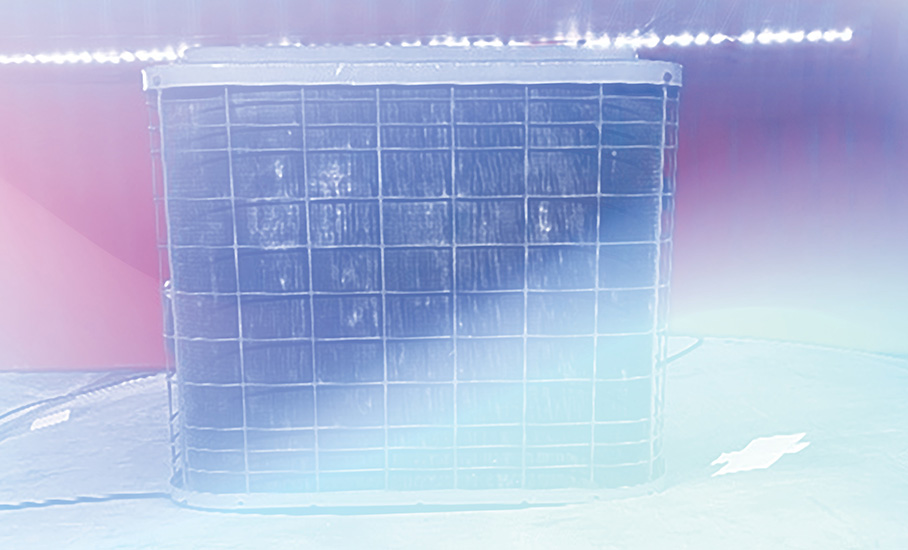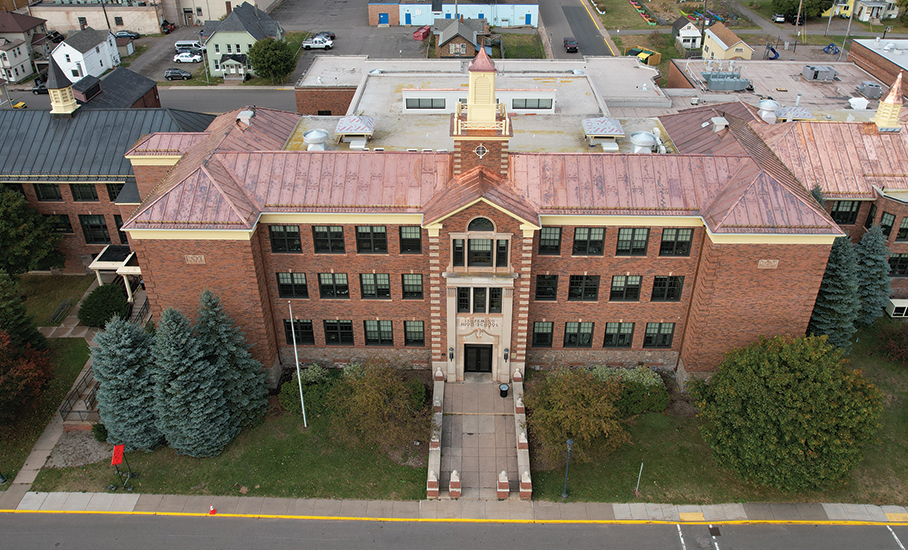-1.jpg)
In the construction industry, sustainability can mean so many things. Is it how a product was made? The end use of the product or application? The material’s end-of-life reuse and recyclability? The term “sustainability” is often used and rarely clarified even as it continues to evolve throughout the general construction industry and, specifically, with regard to roof systems and roofing applications.
Cover boards can play an important role in low-slope membrane roof system sustainability.
Resiliency
At the highest level, a roof assembly should last its expected life cycle. One of the most resilient roof system components on the market today is a cover board. The reason a cover board exists is to add resiliency to every roof system on which it is installed. The right cover board can help resist fire, punctures, and high impacts from hail or wind-driven debris.
Part of a sustainable roof system is its resilience. Why is resiliency important? According to The American Institute of Architects, as much as 68% of all commercial low-slope roof systems have mechanical equipment placed on them. Adding to the resiliency need: Mechanical technicians and service people don’t always understand roof system components or limitations, and dropping of tools, for instance, can lead to a significant puncture incident. This low-impact puncture/foot traffic/service worker damage cannot be underestimated as it may compromise the performance of the roof when further exposed to the elements (rain, wind, hail and fire).
Using a cover board on a single-ply membrane roof increased the median life expectancy by four years
New to the roof sustainability discussion is installed solar panels. As opportunities for harnessing solar energy increase, roofing contractors are seeing more solar panels installed on low-slope roof systems. Solar arrays, while beneficial to sustainable design, can carry an increased risk of fire-, puncture- and impact-related damage. How can a roof system designer create the necessary roof system resiliency and allow for opportunities for solar growth?
Think of a roof membrane as a monolithic surface designed to keep a roof system safe and whole. A rigid cover board made of a noncombustible material installed below the membrane and above the insulation can help mitigate some risks associated with adding rooftop solar arrays. By pairing a membrane with a rigid cover board, you can enhance the performance of the entire roof assembly should rooftop solar panels be a consideration during the life cycle of the roof.
Insulation also is an important roof system component, and it seems as though energy codes are requiring additional insulation to increase energy efficiency and thermal performance. A rigid cover board can provide increased compressive strength to protect the insulation from cavitation or crushing.
Additionally, a cover board can provide increased puncture resistance to prevent potential insulation saturation associated with moisture intrusion from leaks. Damage to insulation can negatively affect its thermal performance resulting in increased energy consumption to heat or cool the building.
-2.jpg)
Using a cover board on a single-ply membrane roof can increase the median life expectancy by four years.
Other considerations
Determining roof assembly resiliency and sustainability must include a closer inspection of each component involved. It’s best to take a holistic approach to what a roof is meant to do, which is to protect the structure, investment and contents. Does your chosen component help the roof system achieve these goals in an optimal, versatile way?
With regard to choosing a cover board, research the product to ensure the choice will help the roof system achieve set goals. Use multiple lenses to determine what’s important and what the product is supposed to do. For example: A manufacturer might recycle products to add perceived benefits such as landfill diversion. Although a product might be highly recycled, is it meeting resiliency requirements? If not, the roof could potentially fail. There is a connection between resilience and long-term sustainability.
An FMI study commissioned by Georgia-Pacific in 2020-21 identified 100 roofs of varying types throughout the U.S. The study found using a cover board on a single-ply membrane roof increased the median life expectancy by four years, reduced operation and maintenance costs by an average of $1.40 per square foot over a 20-year lifespan and increased the percentage of roof assemblies (52% to 86%) that met their full life expectancies compared with a single-ply membrane roof without a cover board.
Find a good partner
Roofing professionals looking for manufacturers with a sustainability or resiliency structure should ask whether manufacturers have a stewardship or sustainability team to help them navigate sustainable design measures similar to the way a technical person or consultant would provide guidance with building codes.
Responsible management of environmental resources is vital to providing products and services to help people improve their lives while using fewer resources and respecting the environment.
Georgia-Pacific believes in five environmental stewardship priorities: innovation; energy efficiency; air quality; water; and responsible resource management. On the manufacturing side, the company believes manufacturing in-market minimizes the impact of truck freight as does trucking products from shorter distances.
Georgia-Pacific has significantly improved its resource efficiency and waste reduction. For example, if part of a product isn’t used in the manufacturing process, it’s turned into another product. The company is constantly considering and looking at improving energy efficiency in operations as well as improving systems in our manufacturing facilities nationwide.
Read Georgia-Pacific’s corporate stewardship report
In addition, many manufacturers use Environmental Product Declarations to help consumers and contractors understand product components and scoring. EPDs can help guide decision making in sustainable design but should not be the only consideration. Performance supporting resiliency and overall life-cycle analysis of the roof system are primary factors to consider.
As an industry, we should try to improve efficiencies across the board, combining product and process together, from researching ways to source critical raw materials to improving our methods of job-site delivery and installation.
Working together
With a topic this complex and a market chockfull of product solutions, there isn’t a single solution to roof system sustainability. Each company needs to better focus on doing its part. Contractors should consider collaborating with the design community, manufacturers and distributors while following guidelines set forth by governing bodies to ensure all performance needs for roof systems are considered.

Hamed Kayello, Ph.D.
Product manager—gypsum
Georgia-Pacific, Atlanta



-1.jpg)